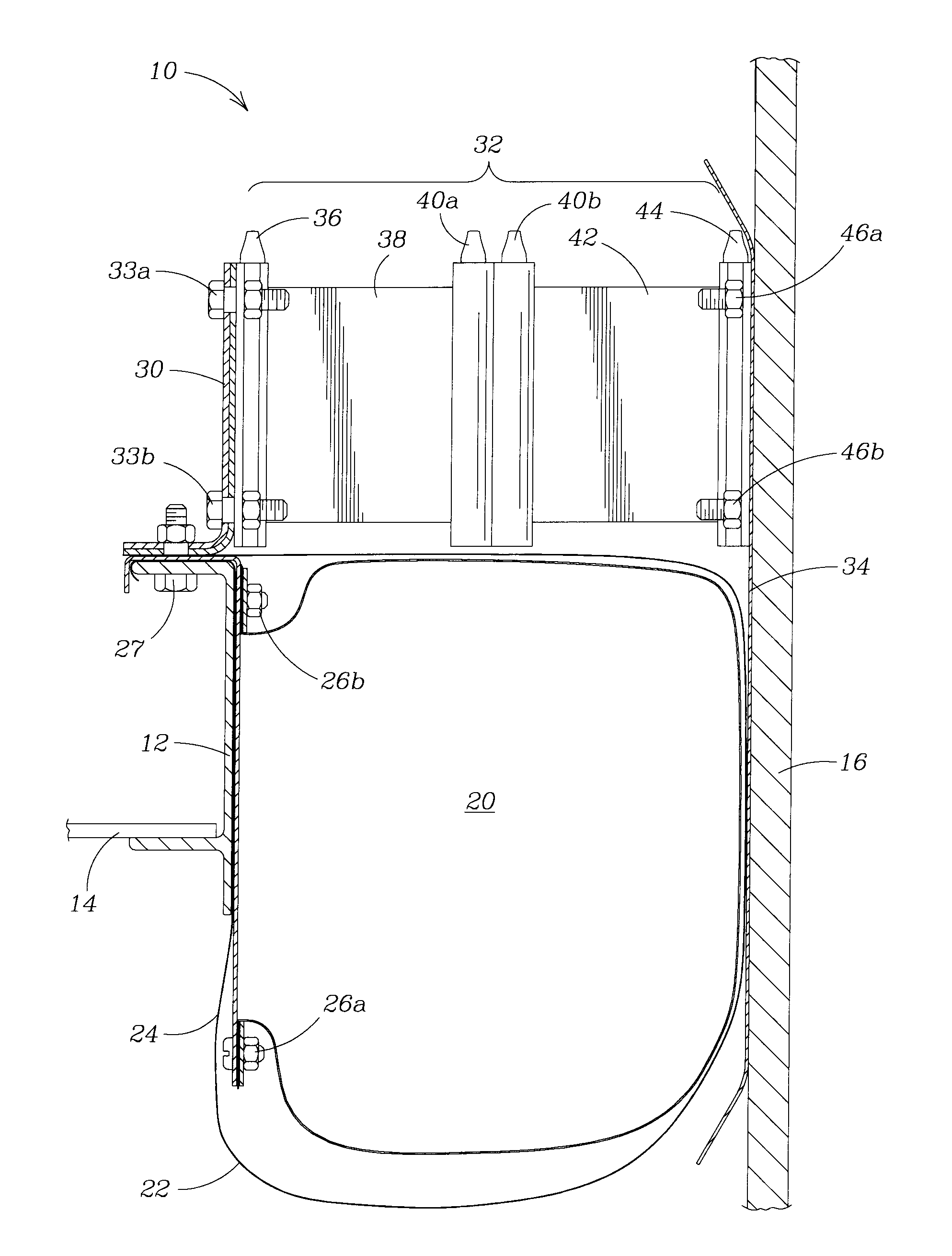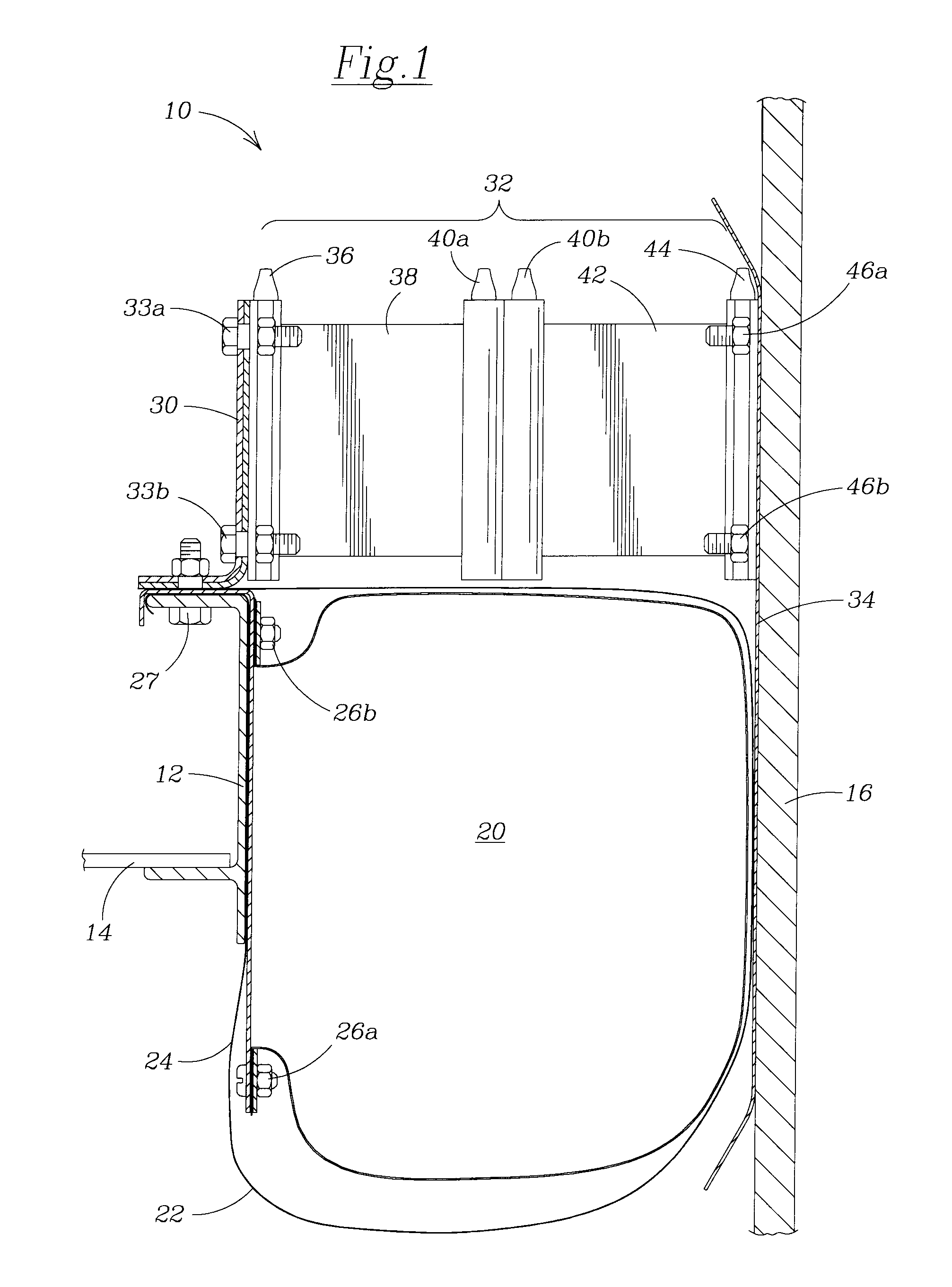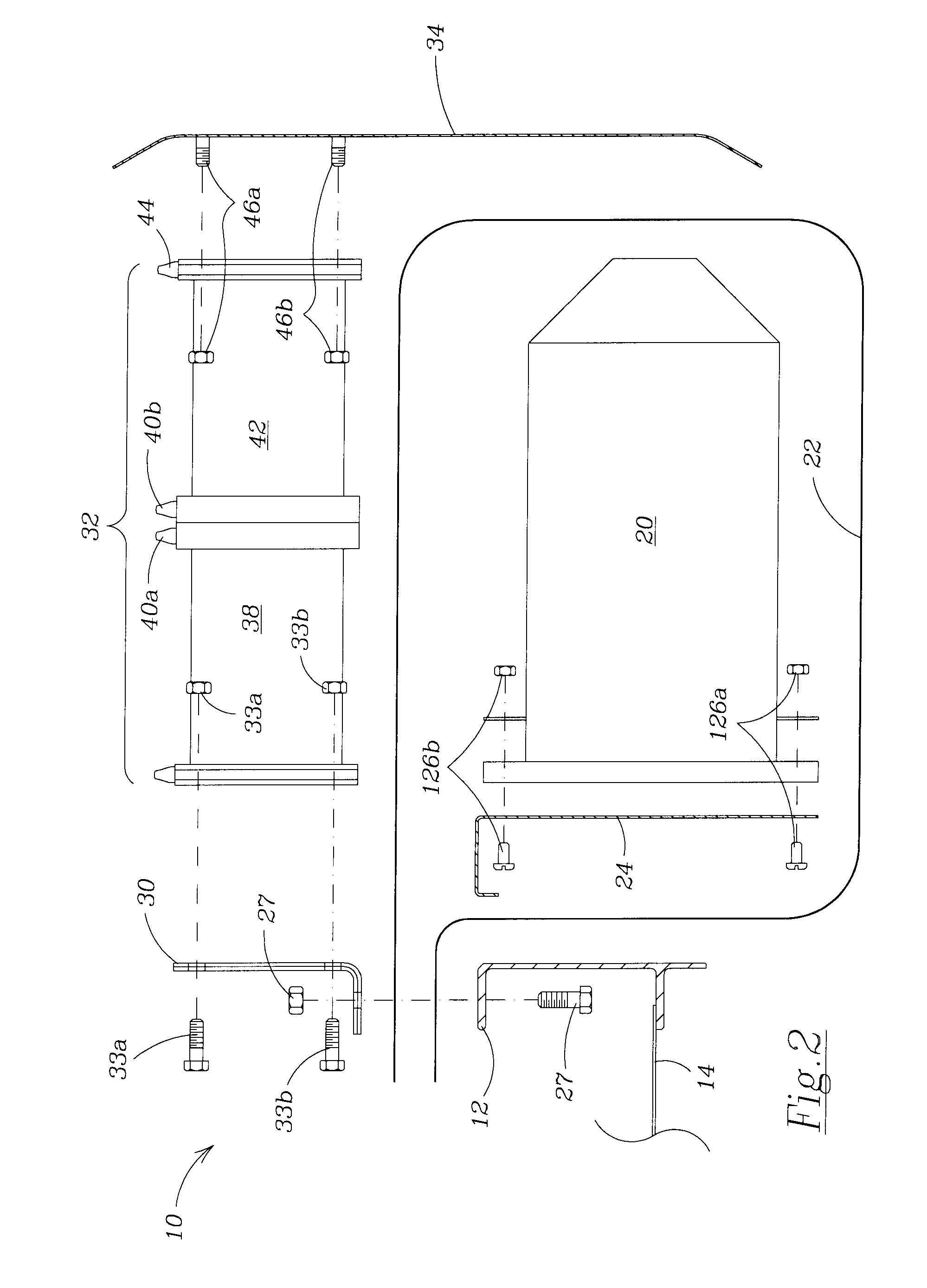Rim space seal system for use with internal floating roof
a technology for rim space seals and floating roofs, which is applied in the direction of engine seals, packaging, machines/engines, etc., can solve the problems of endangering human inspectors, the rim seal does not have any protection from the reversal of movement flexure, etc., to prevent unwanted leakage, prevent abrasion or puncture, and maintain integrity
- Summary
- Abstract
- Description
- Claims
- Application Information
AI Technical Summary
Benefits of technology
Problems solved by technology
Method used
Image
Examples
first embodiment
[0022]Referring now to the drawings in detail, where like numerals refer to like parts or elements, there is shown in FIG. 1 a peripherally mounted floating roof seal 10 of the present invention. The seal is mounted to the outer perimeter structure of an internal floating roof within a storage tank. The perimeter structure of the floating roof shown in FIG. 1 includes an outer sidewall 12 of an open top panel system having a bottom plate 14 extending inward into the space defined by the other sidewalls of the panel system. The floating roof structure is set off from the inner tank wall 16 creating an annular or rim space in which the floating roof can move in the horizontal plane as its floats on the surface of the stored liquid. In the annular or rim space a seal is deployed to reduce as much as possible the evaporation of the stored liquid into the internal tank atmosphere. In this embodiment the seal is depicted as a liquid-mounted seal 20 with a solid foam core disposed within a...
second embodiment
[0030]In FIG. 4 the rim seal system 110 of the present invention is depicted with a flexible membrane type seal as the primary seal and a wiper type seal positioned above as the secondary seal. In this embodiment, the rim seal system 110 is comprised of a flexible membrane seal 120 mounted between the outer sidewall 12 of the floating roof and the protective shoe 34. A partial perimeter section of the floating roof is depicted as the outer perimeter sidewall 12 and bottom plate 14 creating one of a plurality of open top panel systems comprising the floating roof. The flexible membrane seal 120 is sandwiched between the upper flange of the outer sidewall 12 and the bottom foot of the extension plate 130 using fastener 127. At its other end, the flexible membrane seal 120 is attached along the mid-portion of the protective shoe 34 by mounting plate 35 and fasteners 37. The extension plate 130 is a reinforced plate extending upward from the top of the outer sidewall 12 and is used to m...
PUM
 Login to View More
Login to View More Abstract
Description
Claims
Application Information
 Login to View More
Login to View More - R&D
- Intellectual Property
- Life Sciences
- Materials
- Tech Scout
- Unparalleled Data Quality
- Higher Quality Content
- 60% Fewer Hallucinations
Browse by: Latest US Patents, China's latest patents, Technical Efficacy Thesaurus, Application Domain, Technology Topic, Popular Technical Reports.
© 2025 PatSnap. All rights reserved.Legal|Privacy policy|Modern Slavery Act Transparency Statement|Sitemap|About US| Contact US: help@patsnap.com



